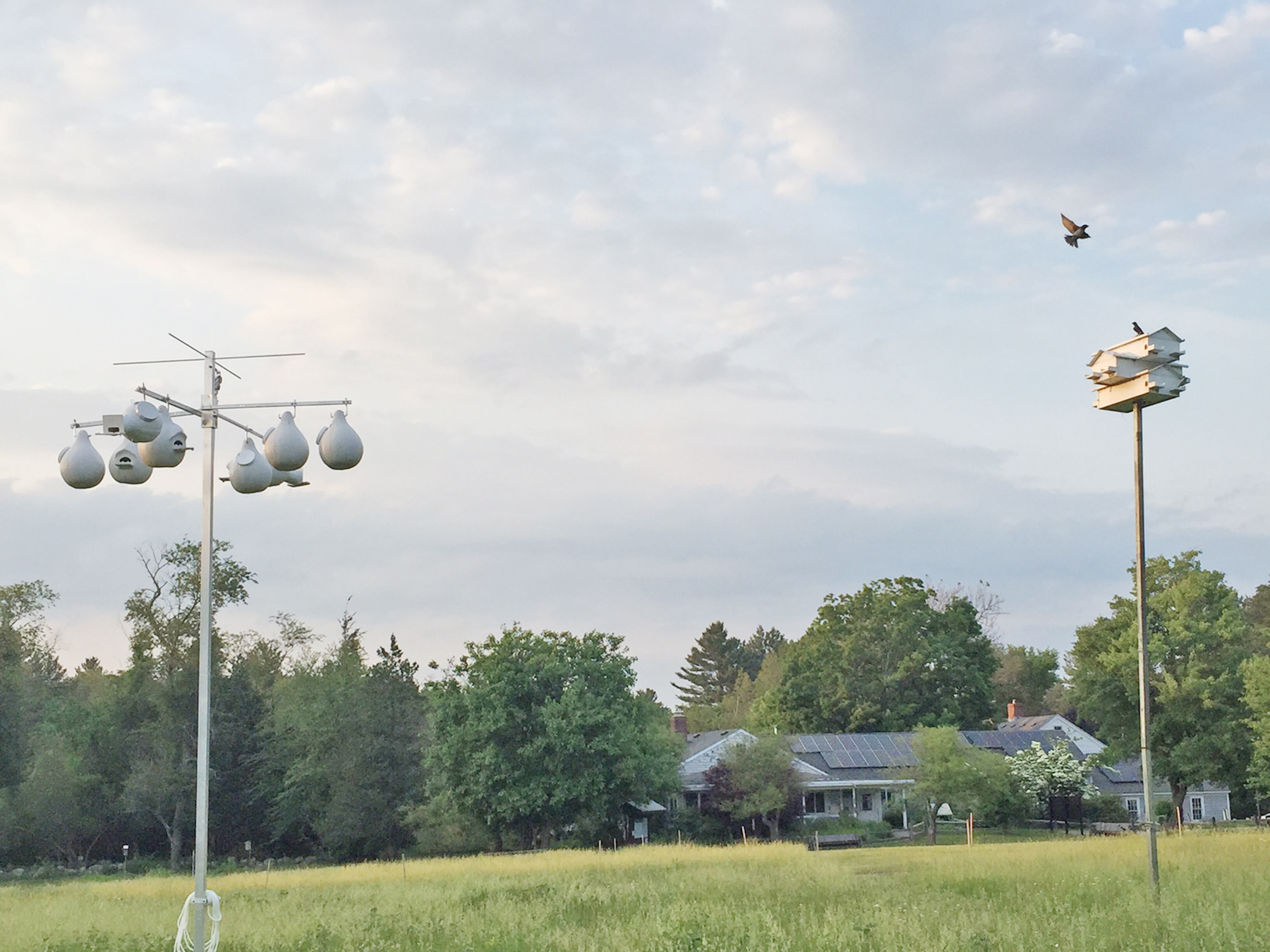Norfolk has another new housing development, but you’d be hard-pressed to find objections to this one. Stony Brook Wildlife Sanctuary has become the landlord for some purple martins, a declining bird species that usually lives along the coast. The sanctuary hopes to manage and increase the colony by providing more houses for the unusual birds.
Purple martins, the largest member of the swallow family, typically nest in human-provided structures atop high poles. According to Doug Williams, the director of Stony Brook, ten years ago someone donated a purple martin house with twelve compartments to the sanctuary, but it remained empty until about four years ago, when a pair of purple martins visited Stony Brook and checked out the empty dwelling.
“They didn’t breed in it the first year,” said Williams, “but they did show interest in it which was very exciting for us.”
The following year, a pair of purple martins came again to Stony Brook, and this time the birds did nest in the special house. This, said Williams, was a big deal in the birding community.
“Birders came from all around to see the purple martins nesting at Stony Brook,” he recounted.
Then last year, four pairs of purple martins came to Stony Brook and nested, raising fourteen chicks. Clearly something had changed, said Williams.
“This group of martins here is the farthest north, inland-nesting group that I know of,” he said.
Williams believes the birds may have been driven here from coastal Rhode Island, when they outgrew their nesting places. After nestlings mature and leave their homes, they will return to the colony the following spring to start their own families if there is room.
“These birds are excellent flyers,” noted Williams, adding that they spend the winter in Argentina and Brazil. “They really get around. It’s not a lot of work for a bird that’s in Rhode Island to make a flight up this far just to look at potential nesting sites.”
About six weeks ago, the sanctuary acquired eight gourd-shaped houses for the martins, bringing the total number of nesting spots to twenty.
Ornithologists believe that Native Americans encouraged the birds—prolific eaters of flying insects, like mosquitoes--to nest nearby, in gourds set high up on poles. And purple martins also benefited because the proximity to humans likely provided a measure of safety from predators.
This symbiotic relationship continues today. Stony Brook volunteer Madeleine Linck, a retired biologist, leads a group of volunteers who are trying to manage the fledgling colony. The volunteers lower the poles with the martins’ houses, check the cavities for eggs, and also clean out the nests of other birds, like house sparrows, that invade the dwellings. The purple martins hover nearby, tolerant of the human activity.
“They feel protected around people,” said Linck.
The bird, a deep, dark purple, has an unusual song, and is known for its acrobatics as it swoops and dives overhead searching for insects.
Unlike many other birds, purple martins are colonial, nesting and breeding in close proximity to each other. Because of that, Stony Brook hopes to purchase more purple martin homes and encourage the colony to grow. The sanctuary’s open field provides ideal living conditions for the birds, with its location near water.
Providing housing, expanding it, caretaking, gathering breeding data, and eventually banding the birds to track their movements will require extra funds. Sanctuary director Williams hopes people will consider making a gift to the Purple Martin Project, to support the sanctuary’s conservation efforts around the bird and the unusual colony now at Stony Brook.
“This is a beautiful and impressive bird, especially when you know the interesting history they have with people,” said Williams.
Added Linck, “If the babies survive, they will return here. Every year it should get better.”
For more information about purple martins, or to make a donation to support the project, visit www.massaudubon.org and select the Sanctuaries tab to find Stony Brook.
Check Stony Brook’s Facebook page for updated information about the purple martins and their chicks.

Issue Date:
July, 2017
Article Body:
Column:
